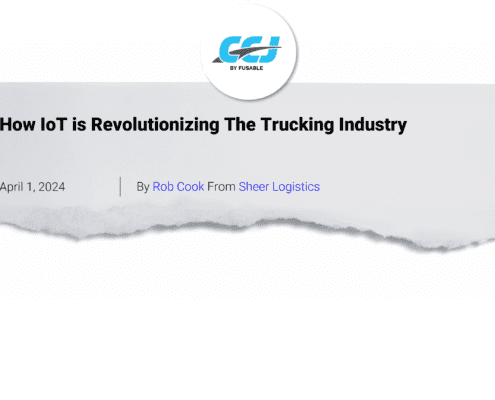
Why Outsourcing Cold Chain Logistics Makes Sense
The point of any supply chain is to deliver products to consumers in the safest, fastest way possible without incurring too much cost or putting the integrity of the product at risk.
While this may seem easy for products like lumber, bowling balls, or notebooks, the complexity and risks greatly increase for temperature-sensitive products such as milk, COVID-19 vaccines, or frozen chicken.
Cold chain logistics is one of the most complex processes a company can undertake— that’s why most turn to outsourcing as the answer to getting temperature-sensitive products where they need to go efficiently. Even companies that boast a robust supply chain system for ordinary goods hire a third party to design and implement the cold chain logistics they need to deliver their products quickly and safely.
This blog will take a closer look at cold chain logistics, the challenges businesses face when implementing a cold chain, and how outsourcing can provide welcome insight into a complicated process.
What Is Cold Chain Logistics?
The concept of keeping a product cold from procurement to transport and delivery has been around for centuries; what hasn’t been is the refrigeration, GPS, and RFID technology that enables total temperature control and condition monitoring of the shipments.
Perhaps the key difference between cold chains and normal supply chains is timing. While standard shipments should avoid delays, the perishable nature of cold products means that any delay is potentially fatal to the quality of the product. This makes the process as important to a successful cold chain as the equipment and technology used. Shipments that are left unrefrigerated for even a few hours can mean lost revenue and products that are potentially dangerous to consumers. Shippers need to determine several factors about each product they sell before establishing a cold supply chain:
- What are the maximum and minimum temperatures the product will be exposed to?
- What is the temperature range the product is safe in?
- What is the distance between origin and destination?
- Is the shipment sensitive to direct sunlight?
- What are the typical size and weights of each shipment?
- Is the shipment subject to customs or tariffs if it needs to cross an international border?
- How will the shipment be monitored remotely?
A proper cold chain isn’t a singular thing. Instead, it is a combination of processes, equipment, and infrastructure that enables the safe transportation of sensitive products.
What Are the Challenges of Cold Chain Transportation?
Disrupted temperatures are the death of temperature-controlled shipments. Extreme weather, equipment failures, and even excessive opening and closing of doors can ruin a shipment and drive up costs. Here are more challenges that a typical cold shipment will face on its journey:
Product quality issues – The goal of a cold chain is to maintain the quality of a product from the time it leaves the shipper’s facility to the moment it is used by the consumer. This process includes the proper sanitizing, cleaning, and sorting that needs to be done prior to loading.
Poor packaging – Products that travel along a cold supply chain have to be handled differently than those that don’t require temperature control. Packaging is important to protect against contamination, airflow issues, and transport-related damage, but additional considerations need to be taken to help temperature-sensitive products maintain a safe and consistent temperature during shipment.
Lack of documentation – When businesses rely on manual methods, documentation suffers. This is a major issue when every step of cold chain management has to be documented.
Shipment delays – Cold chains are time sensitive, and unforeseen delays can spoil large shipments of expensive products in a matter of hours.
Lack of temperature-controlled storage – The way to handle shipment delays is to store the shipment in a warehouse, but when temperature control is required an additional level of complexity is added to the mix. Cold storage is difficult to find and expensive, which means a well-designed cold chain avoids delays whenever possible.
The ‘When’ of Quality Cold Chain Logistics Outsourcing
From actual processes to digitization, a modern supply chain is more of a journey than a destination. Given the cost, time, and expertise needed to design and manage a flexible, efficient, stable, sustainable, and repeatable cold chain, manufacturers of all sizes are turning to 3PL experts like Sheer Logistics to provide end-to-end cold chain management systems.
Cold chain logistics for perishable food or medical supplies require a very specific skill set and carry a significant risk if not implemented well. Outsourced cold chain logistics services bring the experience and knowledge you need to design a resilient process.
The Accountability To Protect Your Shipments
The Sheer team is always focused on best practices and cutting-edge technology, and nowhere is this more apparent than in our cold chain consulting services. We have helped clients design, implement, and manage cold chain management systems.
The Accuracy To Improve Any Process
“Good enough” never works with cold chain shipping. When you are shipping perishable items that need to maintain an exact temperature from beginning to end, accuracy is especially important. We use the latest transportation management systems, data loggers, and GPS technology to help you track and document the condition of temperature-controlled shipments.
The Trust You Need To Grow
The only way our business works is through trust. Trust means that we are transparent in our decisions and that we always have your best interests in mind. Trust is the most important element of anything we do, and we will work every day to earn and maintain your trust.
Reach out to Sheer Logistics for more information about our refrigerated shipping capability, transportation management systems, and cold chain transportation insight that will revolutionize your business.






